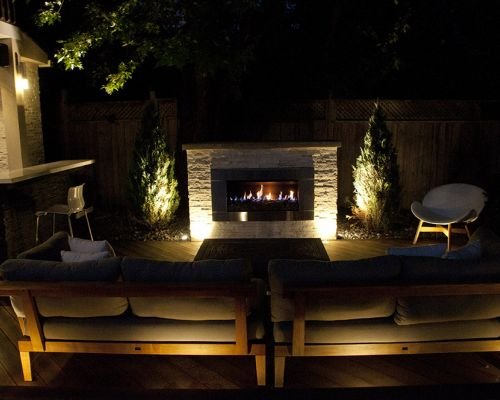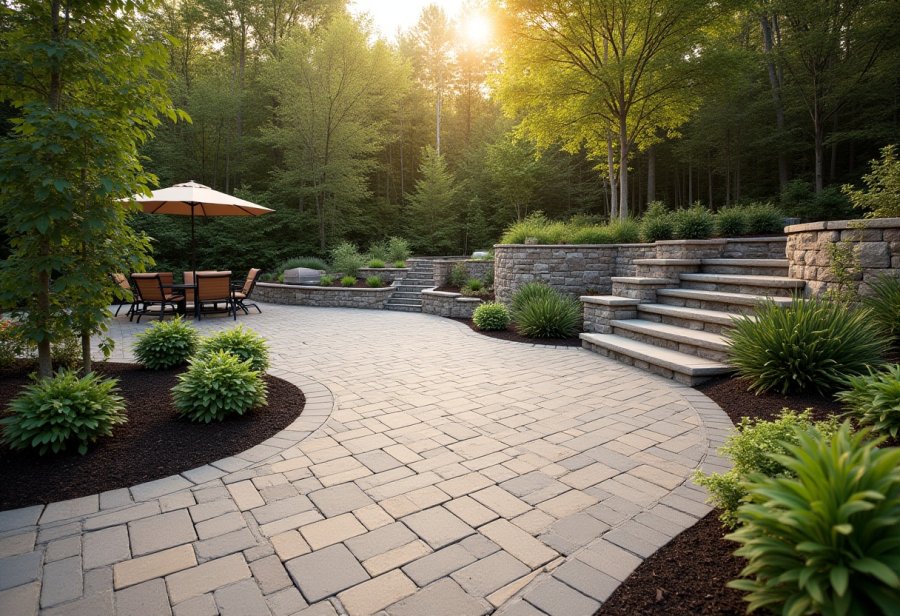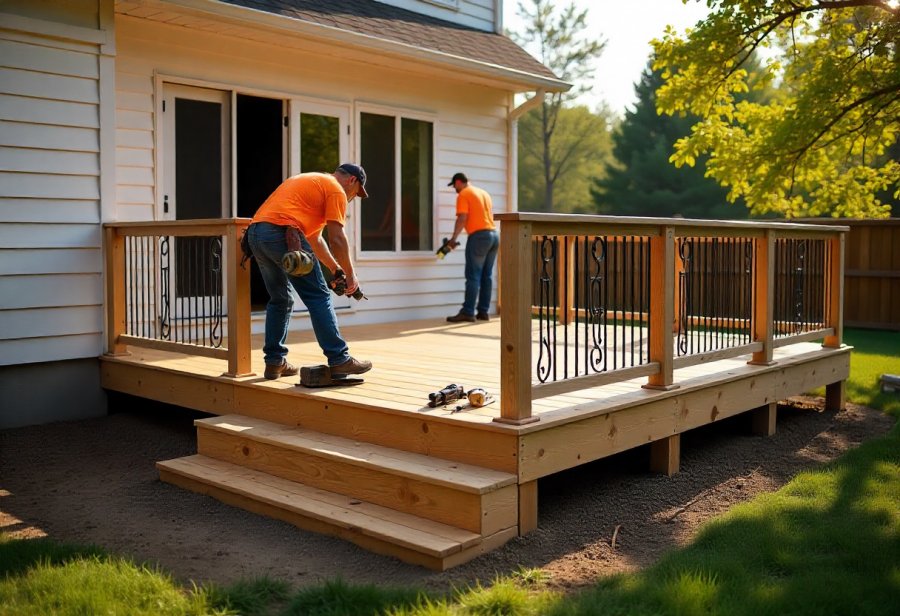Imagine transforming a Toronto yard into a stunning outdoor haven that balances breathtaking beauty with environmental responsibility—can such harmony truly be achieved? This exploration reveals how thoughtful landscape design embraces native plants, water management, and eco-friendly materials to create resilient, sustainable spaces that thrive across seasonal shifts. From strategic plant placement and innovative features like rain gardens to energy-efficient lighting and smart irrigation, each element is crafted to maximize function and aesthetic appeal. But how do designers ensure these spaces remain low-maintenance while supporting local ecosystems? As Toronto’s climate challenges evolve, emerging innovations like green roofs, renewable energy integrations, and advanced planning tools promise to reshape outdoor landscapes. Will the future of sustainable landscaping be a seamless blend of technology, ecology, and artistry? The journey from concept to reality showcases not just beautiful yards, but a commitment to ecological stewardship—turning outdoor retreats into symbols of responsible living.
Transform Your Toronto Backyard with Expert Landscape Design
Looking to enhance your outdoor space in Toronto? Toronto Landscape & Design (TLD) specializes in creating stunning backyards with natural stone features, water gardens, irrigation systems, and retaining walls. Our award-winning designers take everything into consideration, ensuring a personalized and beautiful transformation that complements your lifestyle. Whether you’re dreaming of a tranquil water garden or durable retaining walls, TLD delivers exceptional results tailored to your needs. For a professional backyard makeover, contact us today at 1.416.644.0499 or email mike@torontolandscapedesign.com to schedule your consultation.

Transforming Toronto Yards Into Sustainable Outdoor Retreats
Transforming a Toronto yard into an inviting outdoor retreat is about more than just adding plants or installing a few features. It’s about creating a space that reflects the homeowner’s personality while also being mindful of the environment. In a city where space can be limited and weather unpredictable, designing yards that are both beautiful and sustainable has become essential. A well-crafted outdoor area can boost curb appeal, provide a peaceful escape, and serve as a practical extension of the home.
Toronto’s unique climate and urban landscape present both challenges and opportunities for landscape design. The key is balancing aesthetic appeal with practicality—selecting hardy native plants, permeable materials, and water management features that stand up to seasonal shifts. Native plants require less water and maintenance, support local wildlife, and help create a resilient, eco-friendly landscape. Stormwater management techniques like rain gardens and permeable paving not only add visual interest but also reduce runoff, protecting nearby waterways.
Designing a sustainable yard involves thoughtful choices about plant selections and materials. Native species thrive with minimal intervention, while eco-conscious features like rain gardens and permeable surfaces help manage water naturally. These strategies turn outdoor spaces into reflections of responsible living—spaces that enhance the environment rather than burden it. Creating zones for relaxation, socializing, and outdoor activities makes the yard more functional and inviting, encouraging homeowners to enjoy their space daily.
Toronto’s weather demands resilience. Selecting drought-tolerant plants, planting shade trees, and designing for water management ensures the yard remains vibrant year-round. Proper placement of shade and permeable surfaces helps mitigate temperature extremes and water runoff, making the landscape adaptable to changing seasons. When these elements are integrated seamlessly, the yard becomes a durable retreat that balances beauty with environmental responsibility.
Transforming a yard in this context is a collaborative process. It begins with understanding the homeowner’s vision, lifestyle, and eco-conscious goals. Through careful planning and ongoing communication, designers can guide clients toward eco-friendly choices that align with their preferences. The result is a personalized outdoor sanctuary that feels both stylish and sustainable, enhancing the home’s value and ecological footprint.
In Toronto, where urban living intersects with ecological concerns, creating outdoor spaces that harmonize beauty and sustainability isn’t just a trend—it’s a necessity. A thoughtfully designed yard becomes more than just a pretty space; it’s a statement of responsibility and care. The journey from concept to reality reflects a commitment to environmental stewardship, ensuring these outdoor retreats remain stunning, functional, and in tune with the city’s ecological goals.
Foundations of Eco-Friendly Landscape Design in Toronto
Sustainable landscape design in Toronto is more than a passing trend; it’s a deliberate shift toward creating outdoor spaces that are both beautiful and ecologically responsible. Historically, many gardens prioritized aesthetics at the expense of environmental impact, often relying on water-intensive plants and non-permeable surfaces. Today, however, homeowners and designers recognize that outdoor spaces can play a vital role in supporting urban ecosystems, conserving resources, and reducing pollution. This awareness has led to a set of guiding principles that focus on resilience, resource efficiency, and harmony with nature.
At the core of sustainable landscaping are native plants, which adapt naturally to Toronto’s climate. These species require less water, fertilizers, and pesticides, making them easier to maintain while supporting local wildlife like pollinators and birds. Incorporating native plants not only reduces ecological footprints but also fosters biodiversity, creating healthier, more resilient landscapes. Water management techniques, such as rain gardens and permeable paving, help mimic natural water cycles, absorb runoff, and prevent erosion. These features work with the environment rather than against it, reducing strain on city drainage systems and improving water quality.
Eco-friendly materials also play a significant role in sustainable design. Recycled paving, permeable surfaces, and sustainably sourced woods minimize environmental impact and promote water infiltration. These choices help recharge groundwater, reduce stormwater runoff, and extend the lifespan of outdoor features. Resilient design is further supported by strategic plant placement, shade trees, and drought-tolerant species that withstand Toronto’s seasonal extremes. By planning for climate variability, landscapes remain vibrant and functional throughout the year.
Beyond plant and material choices, sustainable practices involve thoughtful planning and ongoing stewardship. Educating homeowners about native plant care, water-efficient irrigation, and eco-friendly maintenance routines ensures long-term success. When clients understand how their landscape supports local ecosystems and conserves resources, they’re more likely to maintain their yards responsibly. The integration of these principles transforms outdoor spaces from decorative to regenerative, contributing positively to the city’s ecological health.
Ultimately, adopting sustainable landscape principles isn’t just about individual yards—it’s part of a broader effort to create resilient urban environments. Thoughtful design that respects natural water cycles, promotes biodiversity, and reduces resource consumption aligns with Toronto’s ecological goals. These practices help ensure outdoor spaces remain vibrant, functional, and environmentally friendly, benefiting both homeowners and the city at large. Embracing these principles makes every yard a small but meaningful step toward a greener, more sustainable Toronto.

Strategies to Create Beautiful, Functional Outdoor Spaces
Creating outdoor spaces that are both visually captivating and highly functional requires a thoughtful approach that seamlessly blends beauty with practicality. A well-designed yard invites relaxation, encourages social gatherings, and supports everyday activities. Establishing clear pathways, comfortable seating, and designated zones for different uses helps organize the space naturally, making it feel larger and more inviting. When these elements are carefully planned, the yard becomes an extension of the home that enhances daily life.
Lighting is a key element in transforming a yard from daylight into an enchanting evening retreat. Proper placement of ambient, task, and accent lighting highlights focal points, adds warmth, and extends usability into the night. Thoughtful lighting choices not only boost visual appeal but also improve safety and security, ensuring the outdoor space feels welcoming around the clock. Considering how the yard will be used at different times allows designers to craft environments that feel inviting at any hour.
Features like water elements, fire pits, or outdoor kitchens elevate a yard from simply attractive to truly functional. A small pond or fountain provides a soothing visual and auditory focus, turning the space into a calming retreat. Fire pits extend outdoor enjoyment into cooler months, encouraging cozy gatherings. Outdoor kitchens and dining areas transform the yard into an entertainment hub, making hosting effortless. When integrated seamlessly, these features enhance both the beauty and practicality of outdoor spaces.
Flow and privacy are crucial for creating a comfortable retreat. Proper placement of plants, screens, and structures can define zones, block unwanted views, and create intimate areas. This strategic planning ensures each part of the yard serves its purpose without feeling crowded or disconnected. When privacy and traffic flow are well thought out, the yard becomes a peaceful, usable extension of the home—ideal for daily living or entertaining guests.
Maintenance considerations often shape design choices. Selecting native and low-maintenance plants reduces ongoing effort, keeping the landscape vibrant with minimal work. Mulching, pruning, and sustainable watering routines help preserve plant health and beauty. Educating homeowners on these routines encourages ongoing care, which in turn supports the long-term enjoyment and sustainability of the yard. A low-maintenance landscape invites frequent use and appreciation.
Designing for resilience is essential in Toronto’s changing climate. Incorporating shade trees, drought-tolerant plants, and permeable surfaces helps the landscape withstand dry spells, heavy rains, and winter cold. These features protect the yard’s integrity, manage water runoff, and reduce energy use. When resilience is integrated into the design, the outdoor space remains inviting and functional throughout the year, regardless of seasonal shifts.
Achieving harmony between aesthetics and eco-consciousness isn’t a compromise but a pathway to creating standout outdoor spaces. Thoughtful plant selection, sustainable materials, and innovative features result in yards that are both stunning and environmentally responsible. When clients see their yard as a reflection of their values, the space becomes more meaningful and more likely to be cherished over time.
By applying these strategies, designers craft outdoor retreats that are not only visually captivating but also practical and sustainable. Every element—from layout to materials—is chosen to serve a purpose, ensuring the yard supports daily living, ecological health, and long-term resilience. The result is a space that elevates the home’s outdoor experience—beautiful, functional, and in tune with nature.
For those interested in exploring innovative ways to enhance outdoor spaces, learning about sustainable landscaping options can be incredibly beneficial. Incorporating eco-friendly practices not only supports environmental health but also ensures the longevity and resilience of your yard. You can find helpful tips and ideas on sustainable landscaping at sustainable landscaping, making your outdoor retreat both beautiful and environmentally responsible.
Bringing Design Visions to Life in Toronto’s Outdoor Projects
Transforming a landscape design from a concept into a stunning outdoor space in Toronto requires careful planning and clear communication. The process begins with understanding the client’s vision, lifestyle, and eco-conscious goals. A detailed site assessment follows, analyzing soil conditions, sunlight exposure, and drainage patterns to develop a realistic and sustainable plan. Involving homeowners early ensures their preferences—such as native plant choices or specific features—are integrated from the start, creating a sense of ownership and satisfaction.
Once the design is finalized, attention shifts to execution. We prioritize eco-friendly materials and native plants suited to Toronto’s climate, emphasizing waste reduction and sustainable practices. Recycled materials like permeable pavers and natural stone, along with native vegetation, help create a resilient landscape that requires less water and maintenance. Regular updates and open dialogue with clients throughout the installation keep the project on track, allowing adjustments that better align with their vision and lifestyle.
A recent example illustrates this approach well. We transformed a neglected backyard into a lush, sustainable retreat by emphasizing native plantings, which conserve water and support local wildlife. A rain garden was added to naturally absorb runoff, while natural stone pathways and eco-friendly lighting created an inviting atmosphere. Throughout the project, the homeowner was actively involved in decisions, ensuring the final result reflected their preferences and values. The outcome was a low-maintenance, beautiful yard seamlessly integrated into Toronto’s environment.
During installation, precision is key. Proper plant placement, thorough soil preparation, and strategic positioning of water and lighting features ensure durability and visual harmony. We take the time to educate homeowners about ongoing maintenance routines, such as mulching and native plant care, empowering them to sustain their landscape responsibly. This ongoing support fosters long-term satisfaction and environmental stewardship.
Collaborative effort is vital from start to finish. Every decision—whether choosing eco-conscious materials or scheduling planting—aims to create a space that is both visually stunning and environmentally responsible. When homeowners see their yard transform into a personal retreat that aligns with their values, it deepens their connection to the landscape and encourages ongoing care.
Designing and implementing outdoor projects in Toronto’s variable climate demands flexibility and expertise. By combining thoughtful planning, sustainable materials, and clear communication, we turn visions into reality. The finished yard not only enhances the home’s outdoor living experience but also supports broader ecological goals. A well-executed project leaves homeowners with a space they love—beautiful, functional, and truly responsible.

Innovating for the Future: Trends in Sustainable Landscaping
As Toronto’s outdoor spaces continue to evolve, emerging ideas and innovative technologies are shaping the future of sustainable landscaping. One of the most promising developments is the rise of smart irrigation systems. These tools use real-time weather data and soil moisture sensors to deliver precise watering, significantly reducing waste while keeping landscapes healthy. Paired with modular, recycled materials like permeable pavers and eco-friendly composites, landscape designs are becoming more adaptable, durable, and environmentally conscious.
Renewable energy integration is gaining momentum in outdoor design. Solar-powered lighting and water features are now more efficient and affordable, allowing homeowners to extend outdoor usability into the evening hours without increasing their carbon footprint. Green roofs and living walls are transforming rooftops into lush, functional habitats that support biodiversity and help cool urban environments. These features not only elevate aesthetic appeal but also contribute to climate resilience, making outdoor retreats more sustainable and future-proof.
Advances in drone technology and 3D modeling are revolutionizing how landscapes are planned and executed. Drones enable precise site surveys, reducing planning time and minimizing errors, while 3D visualization tools help clients better understand designs before construction begins. This synergy allows for more efficient use of eco-friendly materials and native plants, ensuring each project aligns with sustainability goals and maximizes ecological benefits. It also fosters greater client engagement and confidence in the process.
The shift toward biodegradable and recycled materials continues to grow, with designers favoring options like recycled stone, biodegradable weed barriers, and eco-friendly mulches. Rainwater harvesting systems, including underground tanks and permeable surfaces, are becoming standard features, helping homeowners reduce reliance on municipal water supplies and manage stormwater naturally. These choices support long-term resilience, lower environmental impact, and promote healthier landscapes.
Looking ahead, consumer preferences are leaning toward outdoor spaces that blend style with ecological responsibility. Features such as native plant gardens, green roofs, and energy-efficient lighting are now staples, supporting biodiversity and conserving resources. Clients also seek versatile areas that serve multiple functions—whether for relaxation, work, or entertaining—without sacrificing sustainability. This demands landscape professionals stay ahead of trends and incorporate innovative, eco-conscious ideas that ensure outdoor environments remain vibrant, resilient, and aligned with ecological priorities.
Technology’s rapid advancement opens new possibilities for sustainable design, making eco-friendly landscaping more accessible and efficient. As these innovations become standard, Toronto yards will not only look stunning but will also actively contribute to the city’s ecological health. Embracing these trends allows homeowners to enjoy beautiful, functional outdoor retreats that support a greener, more sustainable future for the city and its residents.






